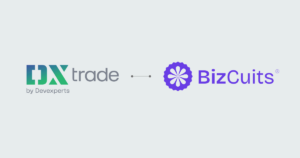Leverage in retail FX: The banks pulled it down a year ago, so what’s new?
The increase in margin required by traders to gain the same advantage as before the EU leverage requirements were implemented may be a boon to brokers, especially when looking at it from inside a prime brokerage division of a major bank.

Almost a week has passed since every brokerage based inside the European Union which offers OTC derivatives to a retail audience has had to adhere to a stringent set of new rulings which affect the means by which it provides its products.
The pan-European directive, which mandates that, effective August 1, 2018, a restriction on the marketing, distribution or sale of CFDs to retail investors has been introduced. This restriction consists of leverage limits on opening positions, a margin close out rule on a per account basis, a negative balance protection on a per account basis; preventing the use of incentives by a CFD provider; and a firm specific risk warning delivered in a standardized way.
FinanceFeeds has reported extensively on this, and its effect on the market, along with full detail of the components of the ESMA regulations, plus our research on how this has affected market participants so far.
Indeed, comparisons with Japan’s leverage restrictions which were implemented several years ago can be drawn, as well as the notion that firms in European jurisdictions that have operations and registered entities elsewhere may endeavor to onboard clients via offshore sister companies in larger droves than is already occurring.
It is already common practice for certain retail companies with CySec licenses to attend to the majority of their client bases via unregulated offshore entities and simply utilize the Cyprus based office to maintain a very small client base that adheres to the rulings for marketing purposes in order to demonstrate a degree of credibility to a non-European target market.
There are even cases of private individuals being used to bring clients onboard from non-European jurisdictions to offshore entities owned by CySec regulated firms, as per an investigation conducted last year by FinanceFeeds.
Indeed, the new rulings may push some smaller retail firms to go down that avenue, however the leverage rulings that now apply to brokerages across the EU should come as no real surprise for another reason than those being currently considered and debated within the retail sector, that being the adverse attitude toward leverage that has been demonstrated by the prime brokerage divisions of many of London’s Tier 1 bank FX divisions for a year already.
Last summer, large FX prime brokerages such as Deutsche Bank and JP Morgan began to reduce their leverage exposure dramatically, hence had the regulatory structure not been implemented, a lot more B-book order internalization would now be taking place than it would otherwise, even among larger brokers that actually do place a degree of order flow with their liquidity partners.
For example, in the summer of 2017, Deutsche Bank’s prime finance division began plans to reduce its leverage exposure by a quarter, roughly €50 billion (£43 billion). This formed a largely ignored part of the bank’s plan to significantly reshape its global equities sales and trading business, in which FinanceFeeds reported at the time the firm’s wish to pull back from offering so much counterparty credit to FX brokerages and to cut 7000 jobs from the investment banking and electronic trading division.
The balance sheet-intensive prime brokerage arm, which caters to hedge funds, was one of the units impacted at the time, and equity derivatives, sourcing hard-to-borrow securities, capital introduction and collateral monitoring are some of the services provided by Deutsche’s prime brokerage desks.
Hedge funds obtain financial leverage from their prime brokers in the form of securities lending, margin loans, repo and derivatives agreements. In cash equities, Deutsche Bank said it will “concentrate on electronic solutions” and its “most significant clients” globally.
Banks have also made their prime brokerages more efficient by narrowing their client focus. A senior Citigroup executive last year stated that clients with less than $250m of assets “tend to be a drag on your return” and so his bank has made a “significant adjustment” towards bigger clients in recent years.
Credit Suisse has slimmed down its client list — though it believes that smaller funds can be profitable clients if they are doing certain kinds of business — and the firm says that his extra balance sheet will be put to work providing additional services for those clients, not growing the client roster.
FX hedge funds are investment firms that manage capital on behalf of high net worth individuals and institutional investors. They can invest using complex strategies and instruments, often making use of borrowing and derivatives to generate leverage to magnify exposures. The hedge fund sector has grown rapidly in recent years and currently manages over US$3.5 trillion of assets globally.
FX hedge funds trade frequently in financial markets and are therefore important for secondary market liquidity and price discovery. They are also interconnected with the banking system via their prime brokers, who provide financing via secured loans and derivative agreements.
Many firms that FinanceFeeds have spoken to recently are beginning to look closely at onboarding hedge funds in non-European jurisdictions in order to move away from ‘retail’ partnerships with standard traders.
With prime brokerage divisions of banks looking at lower end order flow as being a ‘drag on balance sheets’, it is possible to consider that those firms that adhere to lower leverage rulings and wish to send their order flow to a prime brokerage via an ‘agency execution’ model rather than by internalizing trades and conducting offshore business in order to continue to offer high leverage, will be more welcome by the banks.
This is because far more margin will be required for traders to achieve the same level of market presence, hence the $100 deposits for a 1:400 leverage ratio which has been very common among smaller brokers will have to increase to $2000 to $3000 to achieve the same market presence under a 1:25 leverage situation.
This increases the brokerages Assets Under Management (AUM) figure, which is a very important yardstick used by banks when assessing prime brokerage counterparty risk.
increase in allocations has largely driven the increase in AUM for the hedge fund industry since the early 2000s. In 2003, 25% of hedge fund AUM was from institutional investors; by 2012, this reached 60% and this is what major Tier 1 banks are focusing on, because it is widely accepted among prime brokerage divisions of banks that one consequence of the inflow of institutional capital into hedge funds is an increased focus on risk management and transparency which means that they are more likely to be less risk-averse about lending counterparty credit.
Capital from these investors is generally considered to be more stable than capital from high net worth individuals, but comes with demands for lower fees and greater transparency. In the United Kingdom, hedge funds have become an increasingly popular investment for pension funds and now account for nearly 7% of total assets for UK defined‑benefit pension funds, up from just 1.5% in 2009 hence it is becoming a stable and transparent core business activity for banks.
Thus, bearing these matters in mind, a brokerage that adheres to the leverage rulings completely, keeps its Europe-centric focus and onboards a set of international clients to a bona fide regulated European entity has the chance of gaining greater assets under management figures due to the increased margin required to maintain similar trades in the live market, whilst at the same time becoming more appeaing to prime brokerages.
Thus, going the hard mile and doing things properly yet again may prove the most sustainable long term.









